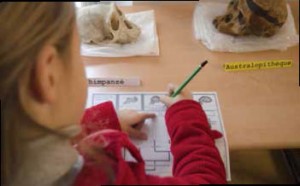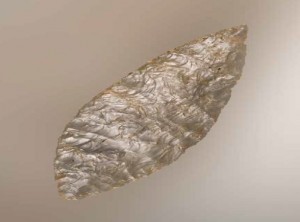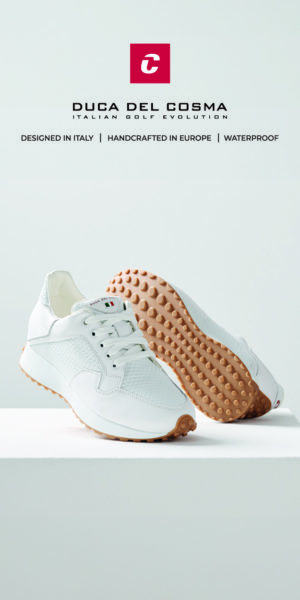Posted on October 28, 2015 in Arts & culture, News.
Visit the new Musée de l'Homme
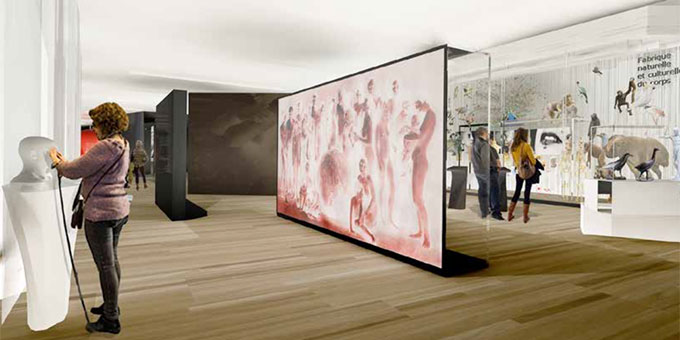
3D view of the entrance to the permanent galleries © Zen + dCoOfficeDesign
Who are we ? Where do we come from ? Where are we going ? It is around these three founding questions that the subject and the tour of this emblematic place of thought are oriented, called to take back the central place that was its own. Spectacular display cases now house the prestigious collections of prehistory, anthropology and ethnology. They offer an immersion in the heart of human evolution. From the Cro-Magnon skull to that of Descartes, from the Venus de Lespugue sculpted more than 20 years ago to Pinson waxes, emblems of anatomy in the Enlightenment, through a surprising gallery of 000th century busts century, all the richness and extraordinary adaptability of human nature are emerging. Art, language, bipedalism, laughter… So many criteria which cannot define the human on their own but which combine to compose our species and find in this place an explanation and an illustration.
At the crossroads of biology and philosophy, anthropology and history, the Musée de l'Homme continues the discourse carried by the other galleries of the National Museum of Natural History. It brings together all scientific disciplines to take a rich and benevolent look at our humanity in all its diversity and to open up avenues for the future that we are forging. Because such is the particularity of this unique museum: intrinsically mixing research and knowledge sharing, science and visiting. The concept of museum-laboratory which made all its originality in 1938, when it was created, remains. The building houses 150 researchers who passionately explore the nature of man, its history and its future and whose discoveries will be presented to visitors on the Science Balcony. In this space, dedicated to research and its scientific topicality, the articulation between naturalist disciplines and human and social sciences which forges the identity of the National Museum of Natural History will find its place.
The building has been completely renovated. The perspective on the superb historic glass roof of the Davioud palace has been magnified and monumental volumes with their spectacular views of the Seine and the Eiffel Tower have been brought to light.
Crowned with a glorious past, heir to the generous ideals of the Popular Front and its founders, bearer of the values of courage and heroism demonstrated by the members of the Resistance network that bears his name, a breeding ground for currents of thought among the most fundamentals of the XNUMXth century, the Musée de l'Homme had to reinvent itself without giving up anything in its history. This is the ambition of this new project, implemented by my predecessors, and carried out with the support of our supervisors and our patrons. I want to thank them. The Museum has a unique heritage and mission, at the heart of naturalist issues that cannot be addressed without a massive contribution from the human sciences.
The reopening of the Musée de l'Homme, a few days before the climate conference which will see major decision-makers reflect in Paris on the future of the planet, will be an opportunity for me to remind you. This reopening will thus also appear as the symbol of the ambition that a Museum must set for itself, the vocation of which is to ensure respect and maintenance of the diversity and universality of humans and their environment.
Bruno DAVID
President of the National Museum of Natural History
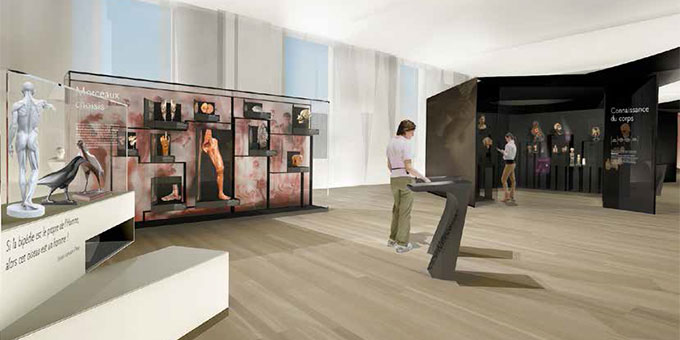
3D view Body knowledge display case © Zen + dCoOfficeDesign
A cultural and scientific event
Beyond the public's expectations, the reopening of the Musée de l'Homme is, for the National Museum of Natural History and its teams, a major event. The culmination of this ambitious project after six years of work:
- Is part of a program to renovate the sites of the National Museum of Natural History of which it is a site for dissemination to the public, conservation of collections, research and scientific expertise as well as education, in accordance to the statutory missions of the establishment.
- Testifies to the support of the ministries supervising the National Museum of Natural History - Ministry of Higher Education and Research and Ministry of Ecology, Sustainable Development and Energy - to breathe new life into this place of reference.
- Illustrates the capacity for renewal of the institution, to reflect both the progress of scientific knowledge on the history of man, and the questions of human societies on their future.
A renaissance, a strong identity
The museum remains within its walls, on the site of the Palais de Chaillot, in an exceptional cultural environment. It keeps the same name "Musée de l'Homme". This name, given by its founder Paul Rivet, is associated with his notoriety, anchored in the memory of the French, known internationally.
It strongly reaffirms the innovative concept of museum-laboratory which made its specificity from its creation in 1938, bringing together in one place collections, researchers and the public.
While subscribing to the major orientations of the National Museum of Natural History, it claims an identity inherited from its history and reinvents the perimeter of its field: Man, in the light of scientific and ethical questions that arise mankind in the XNUMXst century.
A metamorphosis
Six years of work were necessary for the entire renovation of the museum both architecturally and museographically. From the outside, nothing has changed; inside nothing is more like before. The building has been completely renovated, the spaces reconfigured to accommodate:
- the public in a museum with permanent and temporary exhibition galleries and mediation spaces,
- the 150 researchers and their students in completely new structures comprising offices and study and teaching rooms, technical platforms as well as collections reserves and a research library.
To find out more about the Musée de l'Homme: www.museedelhomme.fr
Drawing Now Art Fair: Tatiana Wolska winner 2024
The invention of language by Gertrude Stein and Pablo Picasso
The history of French women's golf at Golf du Sorbier






